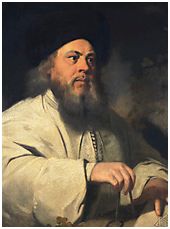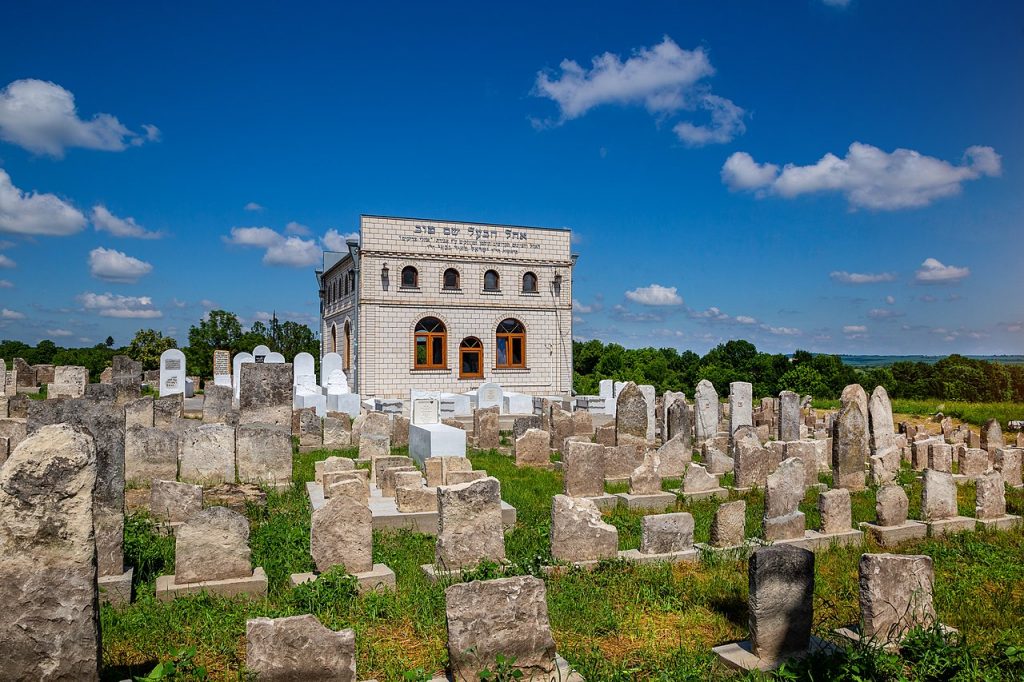
The terrifying war against Ukraine changes, of course, the function of these pages devoted to the Jewish cultural heritage of that country. Many of the places mentioned were razed to the ground by bombs. While these pages are not intended in the present time for tourism, they may be useful to researchers and students as historical references. References to so many painful histories during the pogroms and the Shoah, but also to the glorious history of Ukrainian Judaism, in its cultural, religious and Zionist dimensions. Wishing the Ukrainian people a speedy end to these atrocities of which they are victims.

Medzhibozh, in Podolia, has been a mythic city for Jewish communities ever since Israel ben Eliezer, better known today as Baal Shem Tov, settled there in 1740.
Israel ben Eliezer, the Baal Shem Tov
Israel ben Eliezer (1700-60), also known as Baal Shem Tov (Master of the Good Name) or Besht, was the founder of the Hasidic movement, which had a great influence in the eighteenth and nineteenth centuries throughout the Jewish world of Ukraine and Poland. Eliezer’s preaching added a spiritual, popular, as well as festive dimension to Judaism. “One Simhat Torah evening, the Baal Shem himself danced together with his congregation. He took the scroll of the Torah in his hand and danced with it. Then he laid the scroll aside and danced without it. At this moment, one of his disciples who was intimately acquainted with his gestures, said to his companions: ‘Now our master has laid aside the visible, dimensional teachings, and has taken the spiritual teachings unto himself’.
Martin Buber, Tales of the Hasidim: The Early Masters, Trans. Olga Marx (New York: Schochen Books, 1947).
The medieval fortress
Medzhibozh, which means “between the Bugs”, is magnificently situated between two rivers bearing practically the same name: the southern Bug, a long river crossing all of Podolia to the Black Sea, and its tributary the Boujok (Little Bug).
Beside the river at the town’s entrance stands a large medieval fortress built between the fourteenth and seventeenth centuries but largely still intact. Before the war, more than 6000 residents, two-thirds of whom were Jewish, lived at the foot of this fortress. There remains, it is said, only one Jew today: the man who guards the cemetery.
The Baal Shem Tov cemetery
This cemetery is very old. The master’s grave is enclosed and protected in a small concrete structure containing prayer books and candles. Walking along the cemetery for about a half mile further, you will reach the new Jewish cemetery of Medzhibozh, whose graves date from the late nineteenth century to 1941.

This cemetery, much larger but less well-known than the old one, is quite beautiful as well. The graves are relatively well preserved, but the tombstones have already begun to sink, and a neighboring farmer has turned part of the cemetery into a farmyard.
The Holocaust victims
Further still, in a difficult to reach in the forest, is located the place where the Jews of Medzhibozh were executed. The mass grave has been covered with a huge concrete slab and a stele bearing the inscription: “Here, in these ravines, on 22 September 1941, the German Fascists barbarian cruelly gunned down more than 3000 women, children, and the elderly, prisoners of the Medzhibozh ghetto. In eternal memory of our compatriots”.